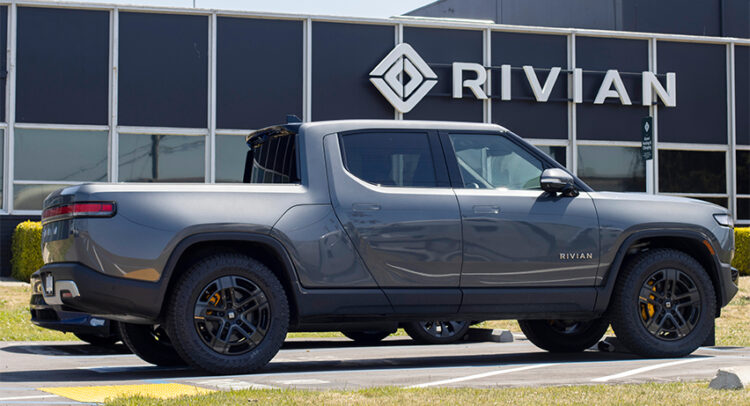After a scheduled spring shutdown to retool its facility, Rivian (NASDAQ:RIVN) recently announced that it has resumed production of R1 models in Normal, Illinois.
Elevate Your Investing Strategy:
- Take advantage of TipRanks Premium at 50% off! Unlock powerful investing tools, advanced data, and expert analyst insights to help you invest with confidence.
The retooling was completed last month, and the company has stated it is still on target to be gross profit positive in 4Q24. That is despite still losing $38,784 per vehicle in Q1. Post re-tooling, that loss is expected to fall to -$29,438.
The route to achieving a positive gross profit involves several elements. These include 50% from variable cost improvements, primarily through material cost reductions due to R1 engineering design changes, commercial supplier negotiations, and lower raw material costs; 35% via fixed cost improvements by boosting the production line rate by 30%; and lastly, 15% from non-vehicle revenues, which include services, accessories, remarketing, finance, insurance, and other software services.
If Rivian can achieve its goal, RBC analyst Tom Narayan says, “investor interest in the stock will be re-energized near-term.”
That said, looking at the EV maker’s long-term prospects, competition remains a big concern for Narayan.
The analyst thinks Rivian’s future hinges on the success of the R2 and R3 models, rather than the R1. The R2 will be available in two battery sizes, with the larger one offering a 300-mile range. The smaller R2, priced at $45,000, is expected to have a range between 250 and 300 miles.
“With Tesla accelerating its efforts on an affordable vehicle with ~300 miles of range in H1/25 (we suspect could cost ~$25k with the $7,500 IRA credit), and GM also with ~300 mile range EVs also priced sub-$30k with the IRA credit, we worry about how R2 will fare at a higher price point and possible lower range,” Narayan explained.
Furthermore, due to the slowdown in the EV sector, Narayan is concerned about how the R2 and R3 models will compete against legacy automakers offering similar products, particularly “compelling PHEV alternatives” like Jeep, which has the best-selling PHEV in the US. When asked about this, management emphasized that the R2 and R3 are specifically targeting the $40,000 to $60,000 market segment, implying they are not aiming for the entry-level EV customer. “Moreover,” the analyst went to say, “Rivian believes its brand is a key differentiator as well as the integration of hardware and software.”
Perhaps, but it remains to be seen whether this will make the difference. For now, Narayan calls Rivian a “show me” story, giving the stock a Sector Perform (i.e., Neutral) rating with an $11 price target, indicating a potential upside of 8% from current levels. (To watch Narayan’s track record, click here)
8 of Narayan’s colleagues are also playing it safe. But with 11 Buy ratings and only 2 Sells, the stock has a Moderate Buy consensus. The average price target is more optimistic at $14.57, implying a potential 44% return over the next 12 months. (See Rivian stock forecast)
To find good ideas for stocks trading at attractive valuations, visit TipRanks’ Best Stocks to Buy, a tool that unites all of TipRanks’ equity insights.
Disclaimer: The opinions expressed in this article are solely those of the featured analyst. The content is intended to be used for informational purposes only. It is very important to do your own analysis before making any investment.

















